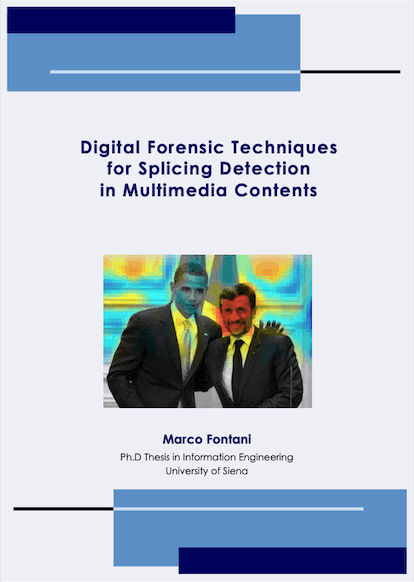

Visual Information Processing and Protection Group

Visual and audio contents always played a key role in communications, because of their immediacy and presumed objectivity. This has become even more true in the digital era, and today it is common to have multimedia contents stand as proof of events. Digital contents, however, are also very easy to manipulate, thus calling for analysis methods devoted to uncover their processing history. Multimedia forensics is the science trying to answer questions about the past of a given image, audio or video file, questions like “which was the recording device?”, or “is the content authentic?”. In particular, authenticity assessment is a crucial task in many contexts, and it usually consists in determining whether the investigated object has been artificially created by splicing together different contents. In this thesis we address the problem of splicing detection in the three main media: image, video and audio. Since a fair amount of image splicing detection tools are available today, we contribute to image forensics by developing a comprehensive decision fusion framework, allowing to intelligently merge the output of different algorithms. On the other hand, authenticity verification of digital videos is a rather unexplored field: we thus contribute by introducing a novel video forensic footprint, called Variation of Prediction Footprint, and we show how it can be used to detect double video encoding as well as removal, insertion and manipulation of frames. Finally, we tackle the problem of fake quality and forgery detection in MP3 compressed audio tracks.
No Code Website Builder